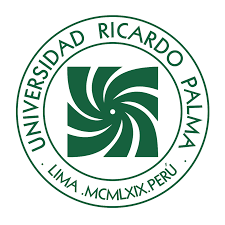Metodologías aplicables a la determinación de velocidad y dirección del flujo de aguas subterráneas mediante trazadores artificiales
DOI:
https://doi.org/10.31381/perfiles_ingenieria.v12i12.817Palabras clave:
Técnica de pozo único, trazadores artificiales, flujo de agua subterráneaResumen
The present report, in the frame of the field studies of the Project “Evaluation of the Groundwater Resources of Peru”, methodologies and techniques developed for onsite artificial tracer aided measurements of groundwater flow velocities and flow directions, are presented here. Horizontal flows are computed through labeling of the whole water column which is coated with a holed pipe in its entire length, below the piezometric level. On the other hand, flow directions are found by the aid of a particular radiotracer with adsorption properties in electroplated metals, by monitoring its concentration in terms of radiation count rate at the inside perimeter of the well. Concentration monitoring inside the well, requires the installation of a proper metal net positioned and fixed with a well-known orientation inside the well, prior to the experiment
Descargas
Citas
Custodio, E. (2010) Hidrología Subterránea (Vol.1). Barcelona: s. e.
Glover, R. (2010) Transient Groundwater Hydraulics. (3 ed.). Colorado: Water Resources Publications.
International Atomic Energy Agency (1997) Emerging New Applications of Radiotracers in Industry. Viena: s. e.
International Atomic Energy Agency (1999) Radiotracer Technology for Engineering Unit Operation Studies and Unit Processes Optimization. Polonia: Krakow-Poland.
Kresic, N. (2007). Hydrogeology and Groundwater Modeling. Florida: CRC Press.
Leclerc, J. P. (2001) Traceurs and tracing methods. Récents Progrès en Génie des procédés, 15(79). Nancy-France: SFGP.
Leclerc, J. P. y Grevillot, G. (1998). Traceurs et méthodes de traçages. Récents Progrès en Génie des procédés, 12(61). Nancy-France: SFGP.
Leclerc, J. P., Mesnier, R., Sebastian, C., Maghella, G., Mamani, E. (2007) Interpretation of radiotracer experiments in an industrial battery of desanders with simultaneous stochastic and non-stochastic flows. Applied Radiation and Isotopes, 65(11), 1208–1214.
Maggio, G. E., Sebastian, C., Duran, O., Cano, M. y Griffit, J. (2000). Guía para aplicaciones industriales de radiotrazadores y fuentes de radiación. Viena: International Atomic Energy Agency.
Nazeer, A. (2014) Hydraulics of Wells Design, Construction and Testing. Virginia: American Society of Civil Engineers
Sebastian, C., Maghella, G. y Mamani, E. (2000) Overview of radiotracer experiments for better understanding of wastewater and water treatment plants in Lima (Peru). Viena: IAEA.
Sebastián C., Maghella G. y Mamani, E. (2004). Evaluación de unidades de tratamiento de agua utilizando técnicas de trazadores. Lima: IPEN, ICT.
Vela, R. (1996). Análisis de la hidrodinámica de sistemas de flujo continuo utilizando trazadores radiactivos. Lima: IPEN.
Descargas
Publicado
Cómo citar
Número
Sección
Licencia
Derechos de autor 2017 Carlos Sebastián Calvo

Esta obra está bajo una licencia internacional Creative Commons Atribución 4.0.
En caso de que el manuscrito sea aprobado para su próxima publicación, los autores conservan los derechos de autor y ceden a la revista el derecho de la publicación, edición, reproducción, distribución, exhibición y comunicación en el país de origen, así como en el extranjero, mediante medios impresos y electrónicos en diferentes bases de datos. Por lo tanto, se establece que después de la publicación de los artículos, los autores pueden realizar otro tipo de acuerdos independientes o adicionales para la difusión no exclusiva de la versión del artículo publicado en la presente revista (publicación en libros o repositorios institucionales), siempre que se indique explícitamente que el trabajo se ha sido publicado por primera vez en esta revista.
Para que quede constancia de este procedimiento, el autor debe llenar los siguientes formatos:

1.png)





